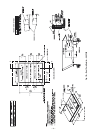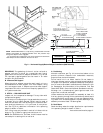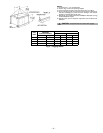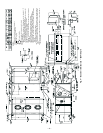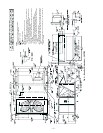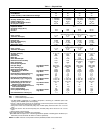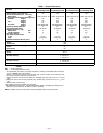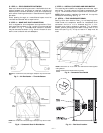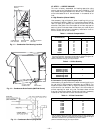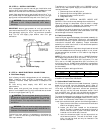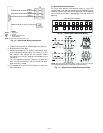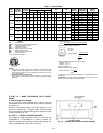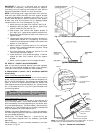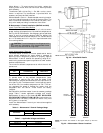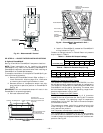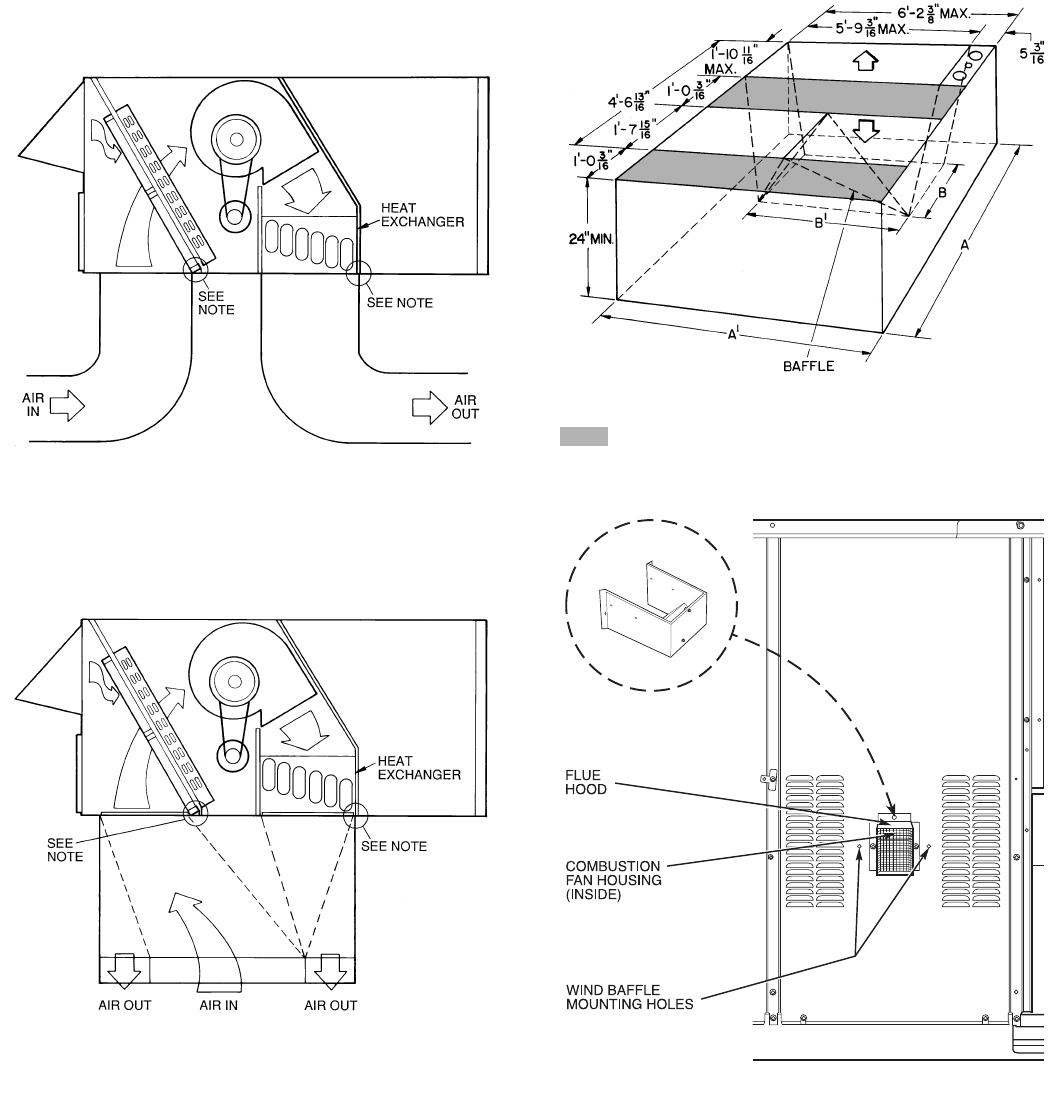
—11—
III. STEP 3 — FIELD FABRICATE DUCTWORK
Secure all ducts to building structure. Use flexible duct con-
nectors between unit and ducts as required. Insulate and
weatherproof all external ductwork, joints, and roof openings
with counter flashing and mastic in accordance with applica-
ble codes.
Ducts passing through an unconditioned space must be
insulated and covered with a vapor barrier.
IV. STEP 4 — MAKE UNIT DUCT CONNECTIONS
Unit is shipped for thru-the-bottom duct connections. Duct-
work openings are shown in Fig. 1 and 4-6. Duct connections
are shown in Fig. 7. Field-fabricated concentric ductwork
may be connected as shown in Fig. 8 and 9. Attach all duct-
work to roof curb and roof curb basepans.
V. STEP 5 — INSTALL FLUE HOOD AND WIND BAFFLE
Flue hood and wind baffle are shipped secured under main
control box. To install, secure flue hood to access panel. See
Fig. 10. The wind baffle is then installed over the flue hood.
NOTE: When properly installed, flue hood will line up with
combustion fan housing. See Fig. 11.
VI. STEP 6 — TRAP CONDENSATE DRAIN
See Fig. 12 for drain location. One
3
/
4
-in. half coupling is pro-
vided inside unit evaporator section for condensate drain
connection. An 8
1
/
2
-in. x
3
/
4
-in. diameter and 2-in. x
3
/
4
-in.
diameter pipe nipple, coupled to standard
3
/
4
-in. diameter
elbows, provide a straight path down through hole in unit
base rails (see Fig. 13). A trap at least 4-in. deep must be
used.
NOTE: Do not drill in this area; damage to basepan may result in water
leak.
Fig. 7 — Air Distribution — Thru-the-Bottom
NOTE: Do not drill in this area; damage to basepan may result in water
leak.
Fig. 8 — Concentric Duct Air Distribution
WIND
BAFFLE
NOTE: Dimensions A, A′, B, and B′ are obtained from field-supplied
ceiling diffuser.
Shaded areas indicate block-off panels.
Fig. 9 — Concentric Duct Details
Fig. 10 — Flue Hood Location



